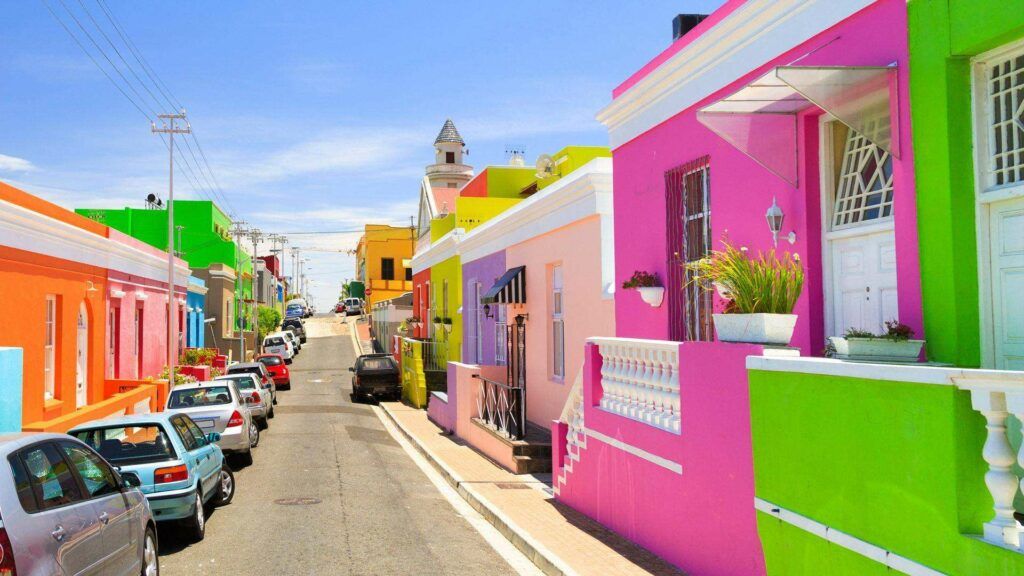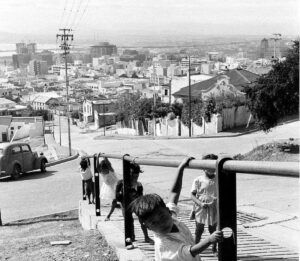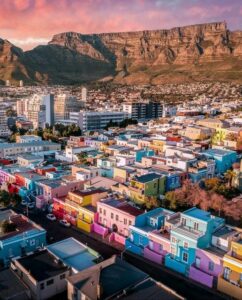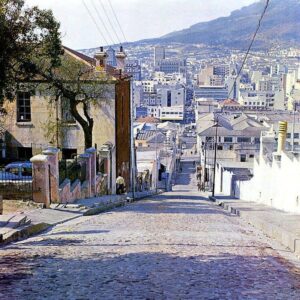
History of Bo Kaap
The Bo Kaap is an area on the slopes of Signal Hill. it is also known as “The slave quarter or Malay quarter. Bo Kaap has been the traditional home of Cape Town’s Muslim community since the second half of the eighteenth century.
The residents of the area are predominantly descendants of slaves brought to the Cape in the sixteenth and seventeenth centuries from the Malay archipelago, Java and Indonesia.
As the indigenous population resisted the Dutch the colonists decided that slave labour had to be imported. These people were sometimes exiles or convicts but often were skilled craftsmen, artisans, tailors and cooks.
Huurhuisies
Here, small houses were built in the Cape Dutch and Cape Georgian style. During 1760 Jan de Waal of the Groote Kerk bought land here from Alexander Coel and between 1763 and 1768 De Waal built several “huurhuisies” (houses to rent), these he rented out to his slaves. After the emancipation of the slaves in 1834 there was an urgent need for modest homes for the freed slaves. These freed slaves were mostly Muslims.

Vintage picture of children playing in a Bo Kaap street
Developers built more homes in the area of Bo Kaap, most of which were also “huurhuisies” The houses were built on terraces with narrow-fronted deep dwellings. The residents were often fishermen, traders and skilled craftspeople who later became homeowners of the buildings. They expressed their freedom and new homeowner status by painting the houses in the bright colours we see today, as rented homes they were painted white.
Since the demise of “the Group Areas Act” the Bo Kaap has become a sought-after area for its interesting buildings and central location. This “gentrification” is sadly threatening this close-knit community.

Schotsche Kloof
This name in Dutch means“Scottish Ravine,” and probably refers to early settlers or the shape of the land. By the 1960s, it was a well-established residential neighbourhood known for its cobbled streets, distinctive architecture. The small suburb is part of the Malay quarter on the slopes of Signal Hill, one of the oldest parts of Cape Town. It was built in the third quarter of the 18th century. The influx of people of Malay origin began in the 1830s, and it was also often referred to as the Islamic quarter.
Post WW1, the area deteriorated, and it was declared a slum in 1944. A group of prominent people worked to retain and rehabilitate the Malay quarter, and in 1966, it was declared a national monument
The Postcode for Bo Kaap is 8001

In May 2019, 19 sites in the Bo-Kaap area were declared National Heritage Sites after the council’s March 2019 approval of the inclusion of the Bo-Kaap area in a Heritage Protection Overlay Zone (HPOZ), which will incorporate around 600 privately-owned homes
Things to see and do in Bo Kaap
- The Ghoema Theatre082 882 8577 64 Rose Street
- Walking tour 076 636 9007 Meet at Motherland Coffee Company, St Georges Mall
- Bo Kaap cooking tour 078 739 4073
- Islamic “kramats” (shrines) and mosques
- The Tana Baru cemetery, established in 1805,
- Voicemap tour audio
WEATHER IN BO KAAP TODAY
see ALL LISTINGS in Bo Kaap
Useful Numbers
- Police: CCT central: 021 467 8078
- Traffic department: Gallows Hill: 021 444 8811
- Fire: central fire station: 021 444 8968
- `Water: 0860 103 089
- Electricity: 0860 103 089
- Ambulance: 10177
- Post office; Cape Town Central 021 464 1707
- Library: Cape Town City Library 021 444 0983
- Closest hospital; Netcare Christiaan Barnard 021 441 000 District Six Community Health Centre 021 883 5400
- SPCA: Cape of Good Hope Grassy Park 021 700 4140
- Museum: 021 481 393871 Wale Street, Cape Town
- Schools:
- Saint pauls primary,Schotsche Kloof 021 424 2830
- Schotschekloof primary school
- Vista high 021 4247430


